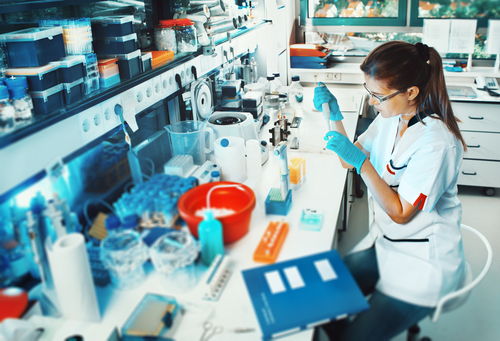Increased Production of Nestin Protein Involved in PAH Development, Study Suggests

Increased production of a protein called Nestin by cells lining the blood vessels in the lungs may contribute to the development and progression of pulmonary arterial hypertension (PAH), a study suggests.
Additional studies are still warranted to further understand whether targeting Nestin might represent a viable and effective approach to treating this life-threatening disease.
The study, “Endothelial cells are a source of Nestin expression in Pulmonary Arterial Hypertension,” was published in the journal PLOS One.
PAH is a serious respiratory disease, characterized by remodeling and thickening of blood vessels in the lung, potentially leading to blockage of blood flow and severe impairment of the heart. The proliferation and modification of cells lining the blood vessels (known as endothelial cells) are critical contributing factors in the progression of the disease. However, the underlying biological mechanisms involved in these processes are still poorly understood.
A previous study showed that pulmonary arteries from PAH patients have increased levels of a protein called Nestin. This protein is known for its important function in promoting self-renewal and proliferation of stem cells. Still, its role in PAH remains unknown.
Now, a team led by researchers from Virginia Commonwealth University evaluated the role of Nestin in experimental cells and lung tissue samples from PAH patients and healthy volunteers.
Results showed that Nestin was in general more abundant in PAH samples. In particular, Nestin was found to be mainly present in endothelial cells close to vascular lesions. This finding was further confirmed when the team analyzed Nestin levels in the lungs and pulmonary arteries of mice with induced severe pulmonary hypertension.
Additional experiments with isolated lung endothelial cells from healthy rats revealed that Nestin levels were particularly higher when these cells were in proliferating conditions and undergoing cell expansion.
Supported by these results, the team reanalyzed PAH patients’ lung tissues samples to see whether Nestin was associated with the abnormal expansion of endothelial cells in vascular lesions. They found that Nestin was mainly accumulated close to the lesions within proliferating cells.
When researchers forced the production of Nestin in rat endothelial cells through genetic engineering methods, a significant increase in cells’ proliferation rate was noted. Also, increased production of Nestin promoted the formation of new vessels (a process called angiogenesis) in an experimental setting.
“Our data suggest that in PAH, the abnormal endothelial cells undergoing aberrant proliferation and angiogenesis in the lung vascular lesions are a source of Nestin,” researchers said. In turn, “elevated Nestin expression likely contributes to unchecked pulmonary vascular proliferation and angiogenesis.”
Several questions remain regarding the underlying mechanism that contributes to the enhanced production of Nestin in the particular setting of PAH. Therefore, more studies are needed to provide insights on Nestin involvement in PAH development, and to determine whether Nestin could be used as a therapeutic target.







